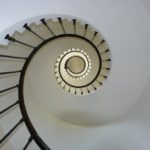Most of us don’t pay much attention to the small print when we sign up for an energy plan. People don’t think about how much they pay for electricity or whether the rates they pay are fair until they get their bill. And let’s be honest: no one wants to pay more than they have to for power.
That’s why it’s good for your wallet to know how to find a good electricity rate since these charges will have the most effect on your power bills. It’s also important to know that where you live has a big impact on how much your rates are. This means that costs may be different in different places.
This page is meant to help you, the customer, learn more about how much electricity costs.
Electricity Usage
Most homes in NSW need electricity for things like air conditioning, refrigeration, lighting, and running electronics. There may also be tariffs on your power bill, such as setup fees, late payment fees, or non-payment fees. However, the following are your standard charges:
Supply Rate: The cost per day to hook up to the energy supply network. This is called a fixed, supply, or service charge on your power bill.
Usage Rates: keep track of how much electricity you use in kilowatt-hours (kWh).
The price of usage is set by the market. At the time this article was written (1100 AEST on Tuesday, April 20, 2020), the market rate for NSW was $32.74 per MWh. But the price you pay depends on the contract you have with your electricity provider. That’s why we recommend shopping around to find the best deal.
Electricity Costs
According to Integral Energy, a large power provider in New South Wales, peak energy costs for residences in New South Wales can reach as high as 31.82 cents per kilowatt hour. This figure does not include the state’s goods and services tax. To our good fortune, the cost of energy during off-peak hours can drop to as little as 11.93 cents per kilowatt hour (GST not included).
Tips for Reducing Your Bills
These steps will help you manage how much energy you use and decide what to do first to save money:
- Do some simple comparisons
- Think about when you use the most energy during the day.
- Get away from the busiest times
- Do something at home
Consider these ways to cut your winter energy costs:
- Use thicker sheets so you don’t have to keep the heat on all night.
- Only heat rooms that you are in.
- When the sun is out, open your curtains and close them when it gets dark.
- If your ceiling fan has a switch that lets you turn it around, use it to move warm air around the room.
- Use window and door seals to stop draughts and cracks.
- Don’t use the shower to warm up (aim for a 4-minute shower).
- Turn off things like TVs, computers, and game consoles that aren’t being used at the PowerPoint.
Consider these ways to cut your summer energy costs:
- Instead of running the air conditioner, use fans.
- Shades on windows can cut down on the heat from direct sunlight (especially north and west-facing).
- When it gets cold outside, open doors and windows on opposite sides of the room.
- Use window and door seals to stop draughts and cracks.
- Don’t use the oven when it’s really hot out. Instead, use the dishwasher or washing machine when it’s cooler.
- If you have a pool, you should buy a dual, multi-speed, or variable-speed pump that uses less energy and run it during off-peak hours.
- If you heat your pool with gas or electricity, you might want to switch to solar or a heat pump. Also, don’t forget to use a pool cover.
Conclusion
As you can see, there is a lot that impacts your electricity costs and usage. Sydney residents may expect significantly reduced energy costs in the coming year. That’s great news, and it gives us something to help ease the burden of rising costs of living. Using the tips above should help you reduce your bill even further. Making changes to your usage will have a significant impact.
Related Posts












